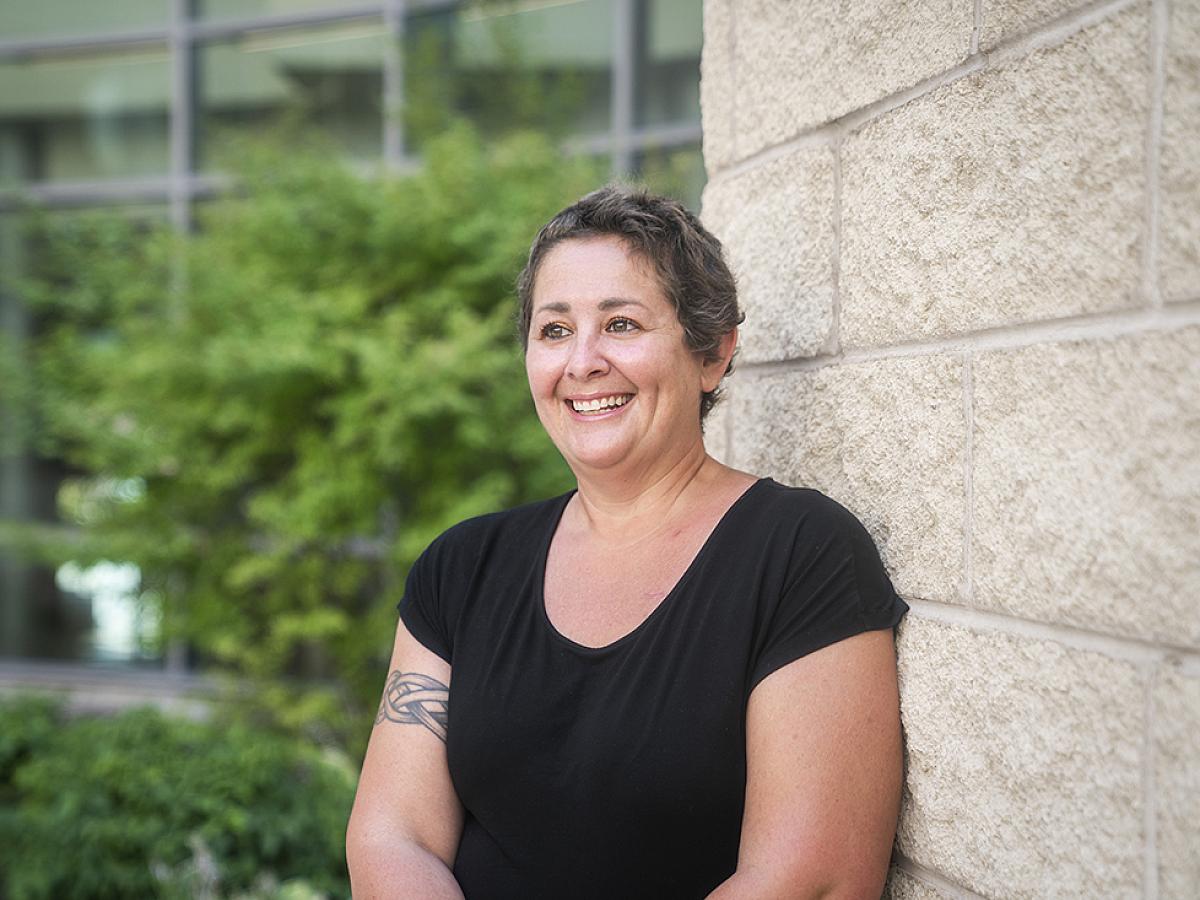
Prevent Breast Cancer
Routine care for women of all ages is vital to keeping you and your breasts healthy. This includes an annual mammogram alongside a clinical breast exam.
Know your body. Be aware of changes. Signs of breast cancer are different for everyone. It is important to know how your breast normally look and feel. Learn more about how to keep your breasts healthy and prevent breast cancer.
According to the American Cancer Society, nearly one in every eight women will be diagnosed with breast cancer in their lifetime. Fortunately, breast cancer deaths are declining, due to early detection strategies and improved treatments. Screening mammography contributes to almost 50 percent more lives saved in women who undergo it.
Mammogram Screening Near You
You can receive a mammogram at Huntsman Cancer Institute or at one of University of Utah Health’s neighborhood health centers. We offer the following services:
- Screening mammogram for breast cancer. Your mammogram will be read by an expert breast radiologist from Huntsman Cancer Institute and University of Utah Health.
- Expert care. If you've been diagnosed with breast cancer or other breast conditions, we can offer you expert care.
- Genetic counseling. Genetic counseling is available if you're concerned about your chances of developing breast cancer based on your family history.
Where Did You Receive Your Last Mammogram?
If your last mammogram was performed at a clinic outside of the University of Utah Health system, we ask that you provide a copy of your most recent mammogram for comparison. Prior images help radiologists compare, look for changes, and avoid unnecessary procedures.
Locations
Farmington Health Center
165 N. University Ave
Farmington, UT 84025
Greenwood Health Center
7495 S. State Street
Midvale, UT 84047
Huntsman Cancer Institute
1950 Circle of Hope Dr.
Salt Lake City, UT 84112
Redstone Health Center
1743 W. Redstone Center Dr.
Park City, UT 84098
Redwood Health Center
1525 West 2100 South
Salt Lake City, UT 84119
South Jordan Health Center
5126 W. Daybreak Parkway
South Jordan, UT 84009
Sugar House Health Center
1280 E. Stringham Avenue
Salt Lake City, UT 84106
University of Utah Hospital
50 N. Medical Drive
Salt Lake City, UT 84132
Cancer Screening & Education Bus
Find a Doctor
Laurie L. Fajardo, MD, MBA, FACR
What Is a Mammogram?
A mammogram (also called mammography) is a special kind of X-ray examination of your breast. Doctors use mammograms to detect and diagnose breast cancer in women who have symptoms in their breast (like lumps or pain) or for women who have no symptoms at all.
A mammogram lets doctors detect:
- breast cancers,
- benign tumors, and
- cysts.
Often mammograms can show these before they can be felt by hand or through touch.
3D Mammogram
All our locations will soon offer tomosynthesis, a state-of-the-art technology that produces 3D images of the entire breast at multiple angles. This helps the radiologist better distinguish abnormal tissue from normal tissue.
Breast Cancer Mammogram Screening Guidelines
How Often Do I Need a Mammogram?
Huntsman Cancer Institute and University of Utah Health recommend that all women receive a breast cancer screening (mammogram) every year starting at the age of 40.
Breast cancer screening from your doctor helps find breast cancer early, when it is easier to treat. Multiple studies have found that screening every year starting at 40 saves the most lives of breast cancer, even in women with no family history.
Talk to your doctor about what cancer screenings are right for you. Screening recommendations may be different for women at higher-than-average risk and women who have a family history of breast cancer. Women who are at a higher-than-average risk may need additional screening exams.

What to Expect at a Mammogram
When you arrive, your nurse will ask to undress from the waist up and take off your deodorant. We will give you a robe to wear during the procedure. A mammography technologist will escort you to a private mammography room. The technologist positions you in the machine and takes on average four images, two for each breast.
Because breast tissue can be very dense and difficult to screen, the mammogram equipment will press your breast between two plates to reduce blur from motion, reduce radiation to the breast, and spread tissue to ensure an accurate test.
The compression only lasts for a few seconds – just long enough for your technologist to get a good image of each of your breasts. Do not hesitate to ask your technologist to explain the procedure. They can answer any other questions that you may have.
Mammogram Results
Radiologists, who are experts in breast imaging, review the mammography images. Patients usually receive results within 24 hours, generally on the same day.
If you need more imaging, the clinic will call you within a few days of the screening exam.
Hear from Our Patients
My Mammogram Saved My Life
Jessica Rivera doesn't have any family history or risk factors for breast cancer. But when she turned 40 she scheduled her first screening mammogram, never expecting the results to come back positive. Jessica hopes to help other women by sharing her story and urging them to get their mammograms.
Conquering Cranky – Optimism amid a Breast Cancer Diagnosis
Candis Shupe was diagnosed with an aggressive form of breast cancer in January of 2019. Candis’s enthusiasm, optimism, and desire to help others has led to her family motto: "Conquer Cranky." She has taught her children about cancer in a nonthreatening way, participated in various clinical trials, and raised more than $11,500 for research at HCI with help from her favorite modern aerobics fitness class, High Fitness.
Miss Resilient: Living through Three Unrelated Breast Cancers
After three unrelated breast cancer diagnoses here I am now, at 77, in good shape, active, and enjoying my life. I hardly notice my mastectomy. My friends have nicknamed me “Miss Resilient.” I’m sharing my story with the hope that a newly diagnosed woman will know she can rise above this disease.






